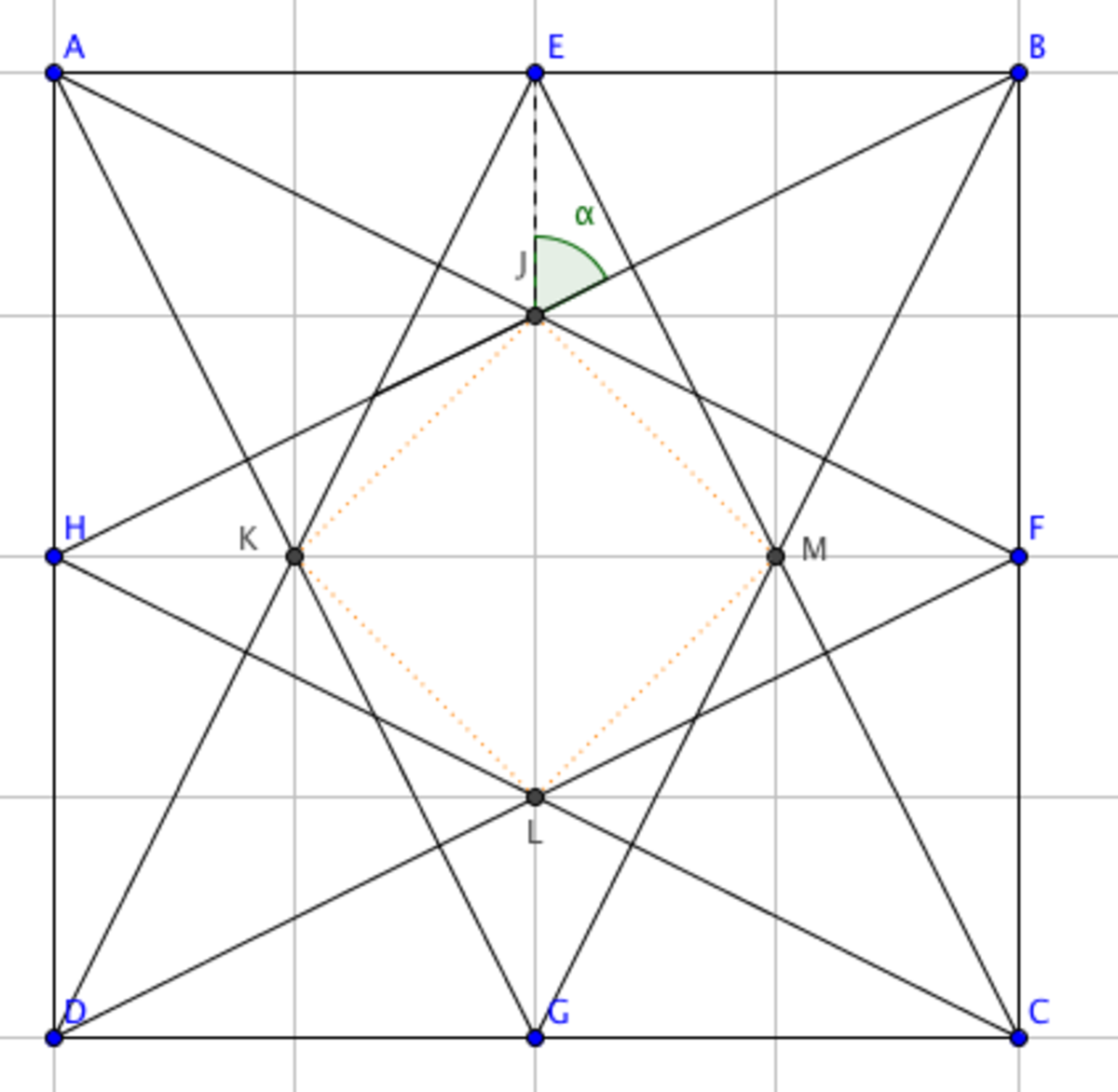Enclosed octagon
A B C D is a square of side length 1. E , F , G and H are the midpoints of A B , B C , C D and D A , respectively. The lines F A , A G , G B , B H , H C , C E , E D and D F determine a convex 8-gon. By symmetry, this octagon has equal sides. If s is the side length of the octagon, then s 2 can be expressed as b a , where a and b are coprime positive integers. What is the value of a + b ?
The answer is 149.
This section requires Javascript.
You are seeing this because something didn't load right. We suggest you, (a) try
refreshing the page, (b) enabling javascript if it is disabled on your browser and,
finally, (c)
loading the
non-javascript version of this page
. We're sorry about the hassle.
2 solutions

Let all points be labelled as on the diagram above. The grid is 0.25 x 0.25 units. Note that J, K, L, M are on this grid as they are intersection points of diagonals of rectangles (each rectangle being half of the square ABCD). Hence J K = 4 1 2 .
Note that cos α = B J E J = 5 1 and sin α = B J B E = 5 2 .
Now, ∠ H J L = α , so ∠ H J K = α − 4 5 .
Denoting the intersection of BH and ED by Q, and looking at half of the isosceles triangle JQK, we have:
J Q = 2 J K ÷ cos ( ∠ H J K ) =
8 2 ÷ ( cos α cos 4 5 + sin α sin 4 5 ) =
8 2 ÷ ( 2 2 ( cos α + sin α ) ) =
4 ( 5 1 + 5 2 ) 1 = 1 2 5 .
This is best approached using coordinate geometry. Let A = ( 0 , 0 ) , B = ( 0 , 1 ) , C = ( 1 , 1 ) and D = ( 1 , 0 ) . Then, we have the equations A F : y = 2 x and B H : y = − 2 x + 1 which give the intersection point ( 4 1 , 2 1 ) . The equations E D : y = − 2 1 x + 2 1 and B H : y = − 2 x + 1 gives the intersection point ( 3 1 , 3 1 ) . Hence, the side length of the octagon is
s = ( 4 1 − 3 1 ) 2 + ( 2 1 − 3 1 ) 2 = 1 4 4 5
Thus s 2 = 1 4 4 5 . Hence a + b = 1 4 9 .